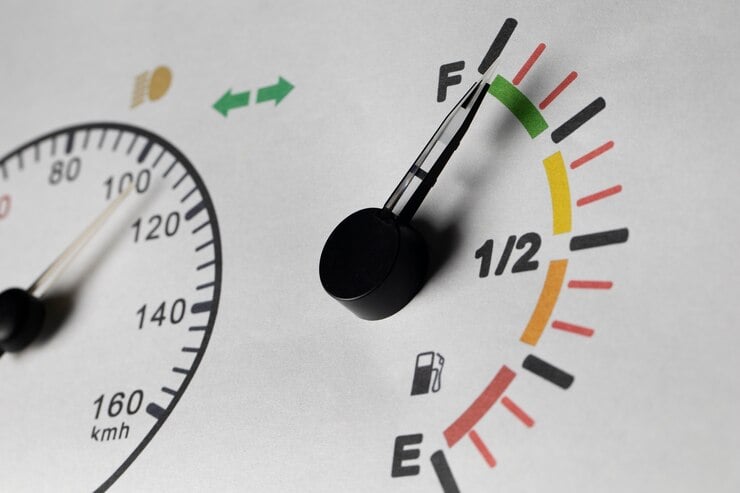Introduction
The B2B mobility ecosystem continues to evolve rapidly, underpinned by favorable macro factors: huge volumes, unmet customer needs, complexity, and technological innovation. It now encompasses fuel and energy cards, fleet management software, specialized mobility services such as driver and fuel management, route optimization, and field scheduling, among others. To gauge the current state of activity levels in the B2B mobility ecosystem, Flagship examined the press releases of a representative sample of 39 companies from 7 different provider types for a recent 12-month period, and we highlight the results below.
Figure 1: Press Releases per Category
(number of press releases as advertised on global website, Jan’24 – Feb’25)
 Overall activity levels in B2B mobility are high. Between January 2024 and February 2025, our sample of 39 mobility providers issued 286 press releases. Most press releases focused on new product/feature launches (27% of total), new client announcements (21% of total), product partnerships (18% of total), and distribution partnerships for electric vehicle (“EV”) charging (12% of total). Announcements for other types of distribution partnerships (e.g., for traditional and alternative fuels) were less prevalent.
Overall activity levels in B2B mobility are high. Between January 2024 and February 2025, our sample of 39 mobility providers issued 286 press releases. Most press releases focused on new product/feature launches (27% of total), new client announcements (21% of total), product partnerships (18% of total), and distribution partnerships for electric vehicle (“EV”) charging (12% of total). Announcements for other types of distribution partnerships (e.g., for traditional and alternative fuels) were less prevalent.
Figure 2: Press Releases per B2B Mobility Provider
(number of press releases as advertised on global website, Jan’24 – Feb’25)
 EV Charge Point Operators (CPOs) were the most prolific in terms of number of announcements, with the EV CPOs in our sample making 79 announcements, of which 41% were related to new clients. Fuel card providers followed with 71 press releases, with a more even distribution of announcement types.
EV Charge Point Operators (CPOs) were the most prolific in terms of number of announcements, with the EV CPOs in our sample making 79 announcements, of which 41% were related to new clients. Fuel card providers followed with 71 press releases, with a more even distribution of announcement types.
More Frequent Type of Announcements: Product/Features
Figure 3: Press Releases Announcing Product/Feature Launches
(number of press releases as advertised on global website, Jan’24 – Feb’25)
 Product/feature announcements were the most prevalent announcement type:
Product/feature announcements were the most prevalent announcement type:
- Fleet Management Software (FMS) providers were the most prolific, with announcements focused on integrating AI into route optimization and operational efficiency tools, EV integration, and safety tools.
- EV CPOs announced new solutions to improve the charging experience both at home and en-route (e.g., enhancing the architecture, charging solution for commercial vehicles, omni port adaptable charger, etc.)
- Fuel card providers and auto manufacturers (“OEMs”) announced new products/features (especially related to EV and alternative fuels), in-car payments, and safety solutions for drivers
New Client Announcements
Figure 4: Press Releases Announcing New Clients
(number of press releases as advertised on global website, Jan’24 – Feb’25)
 EV CPOs released the highest number of new client announcements, as they sought to highlight expansion of EV charging infrastructure with both private and government clients. Other provider types had markedly fewer new client announcements. Fintechs made announcements regarding new clients for core and expansion use cases, OEMs expanding their reach in EV and driverless trucks, and FMS announced new government agency clients.
EV CPOs released the highest number of new client announcements, as they sought to highlight expansion of EV charging infrastructure with both private and government clients. Other provider types had markedly fewer new client announcements. Fintechs made announcements regarding new clients for core and expansion use cases, OEMs expanding their reach in EV and driverless trucks, and FMS announced new government agency clients.
Product Partnerships
Figure 5: Press Releases Announcing Product Partnerships
(number of press releases as advertised on global website, Jan’24 – Feb’25)
 Announcements regarding product partnerships were more evenly distributed:
Announcements regarding product partnerships were more evenly distributed:
- FMS providers announced partnerships that embed with OEMs and fuel systems to centralize data on vehicle status, maintenance, and telematics
- OEMs partnered with energy providers, AI developers, in-car payment providers, and EV CPOs to push towards higher adoption of EV and vehicle digitization
- Fuel card card providers partnered to continue in their push to expand from traditional fuel offerings into digital payments, EV integrations and retail services
- EV CPOs announced partnerships to enlarge and enhance their networks with faster, more reliable, and more accessible charging solutions
EV Distribution Partnerships
Figure 6: Press Releases Announcing EV Distribution Partnerships
(number of press releases as advertised on global website, Jan’24 – Feb’25)
 Fuel card providers, EV CPOs, and OEMs have been actively investing in EV charging infrastructure expansion and customer experience enhancements. Collaborations between OEMs and EV CPOs are becoming increasingly common, with the goal of accelerating the deployment of faster and more widespread charging stations. Additionally, fuel card providers are forming strategic partnerships with EV CPOs to expand merchant network coverage and to distribute co-branded EV charging cards.
Fuel card providers, EV CPOs, and OEMs have been actively investing in EV charging infrastructure expansion and customer experience enhancements. Collaborations between OEMs and EV CPOs are becoming increasingly common, with the goal of accelerating the deployment of faster and more widespread charging stations. Additionally, fuel card providers are forming strategic partnerships with EV CPOs to expand merchant network coverage and to distribute co-branded EV charging cards.
Figure 7: Fuel Card Providers Press Releases
(number of press releases as advertised on global website, Jan’24 – Feb’25)
 Fuel card issuers continue to highlight their efforts to expand into EV and sustainability (DKV announced 12 EV distribution partnerships) and alternative fuels, while continuing to partner for fuel distribution (DKV 4 press releases, UTA 6). Fuel card issuers continue to expand geographically (UTA published 3 press releases on the topic, Eurowag, DKV, Radius and Wex 1) and enhance card functionalities (Eurowag and Comdata published 4 press releases each on new products/features, Wex 2), particularly in areas such as in-car payments, seamless EV charging access, and integration with digital payment ecosystems.
Fuel card issuers continue to highlight their efforts to expand into EV and sustainability (DKV announced 12 EV distribution partnerships) and alternative fuels, while continuing to partner for fuel distribution (DKV 4 press releases, UTA 6). Fuel card issuers continue to expand geographically (UTA published 3 press releases on the topic, Eurowag, DKV, Radius and Wex 1) and enhance card functionalities (Eurowag and Comdata published 4 press releases each on new products/features, Wex 2), particularly in areas such as in-car payments, seamless EV charging access, and integration with digital payment ecosystems.
Conclusion
Using press releases as a proxy, activity levels in B2B mobility continue to be high across categories. Payments and fintech underpins or is relevant for many expansion initiatives in the space, and therefore B2B mobility continues to warrant consideration by investors and financial sponsors, different types of fintechs, and software providers. Overall, the topics with the highest announced activities clustered around EV and software, but even “traditional” mobility is still an underpenetrated area in payments with many opportunities for expansion by specialists and non-specialists alike (e.g., why don’t banks offer basic mobility solutions for their huge numbers of SMB customers, many of whom have small fleets?). Although recent macro trends in the mobility space indicate a pullback or at least slowing growth in EV generally, the overall B2B mobility space remains robust and activity levels create a call to action for all types of fintech and payments providers: most types of fintech and payment providers should assess B2B mobility for suitability as a target vertical, and many will have opportunities to grow in the space.
Please do not hesitate to contact Erik Howell at Erik@FlagshipAP.com with your comments or questions.





